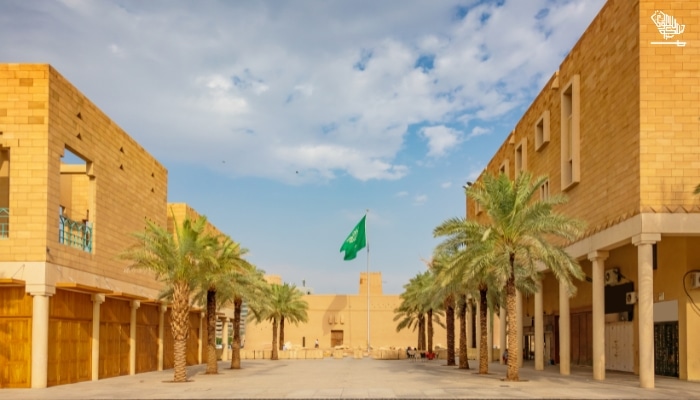Saudi Arabia’s cities are a unique blend of heritage, religion, and modern development. From the bustling capital of Riyadh to the sacred cities of Mecca and Medina, and the fast-growing hubs of the Eastern Province, each city plays a vital role in the Kingdom’s economy and culture.
This guide highlights the biggest, richest, and safest cities, complete with their area, population, and average cost of living, giving travelers and expats a clear snapshot.
Quick Facts: Major Cities in Saudi Arabia
- Largest City: Riyadh – 7.6M+ residents, 1,973 km² area
- Safest City: Medina – consistently ranked for safety & hospitality
- Richest Cities: Riyadh, Jeddah, Dhahran, Dammam, Khobar
- Cost of Living: SAR 2,000 – 3,500/month for singles; SAR 8,000 – 12,000 for families
Here is a list of notable cities across Saudi Arabia, highlighting a diverse range of population sizes and cost of living.
| City | Area (km²) | Population (approx.) | Cost of Living*(Single) | Cost of Living (Family of 4) |
|---|---|---|---|---|
| Riyadh | 1,973 | 7.6M+ | SAR 3,160 | SAR 11,427 |
| Jeddah | 1,600 | 3.9M+ | SAR 3,059 | SAR 10,966 |
| Mecca | 1,200 | 2.4M+ | SAR 3,280 | SAR 11,842 |
| Medina | 588 | 1.5M+ | SAR 2,374 | SAR 7,243 |
| Dammam | 800 | 1.3M+ | SAR 2,894 | SAR 10,230 |
| Tabuk | 300 | 455K+ | SAR 1,643 | SAR 4,820 |
| Khobar | 571 | 400K+ | SAR 2,700 | SAR 8,500 |
| Buraydah | 1,290 | 574K+ | SAR 2,200 | SAR 7,600 |
| Abha | 210 | 334K+ | SAR 2,100 | SAR 7,000 |
| Al Hofuf | 291 | 350K+ | SAR 2,300 | SAR 7,200 |
The cost of Living may vary from person to person, and it’s an average cost.
The 5 Richest Cities in Saudi Arabia
Saudi Arabia’s wealth is driven by oil, finance, and commerce hubs. Here are the richest:
- Riyadh – Political capital, financial centre, home to multinational HQs.
- Jeddah – Major Red Sea port, commercial trade hub.
- Dhahran – Headquarters of Saudi Aramco, the world’s largest oil company.
- Dammam – Eastern Province hub, oil + shipping industries.
- Khobar – An Affluent city with luxury living and oil industry proximity.
The Safest Cities in Saudi Arabia
Overall, the whole country is safe due to the strict law implementation.
- Medina – Known for hospitality and religious safety.
- Mecca – Security is highly enforced due to millions of pilgrims.
- Abha – Peaceful, small-population city in the Asir mountains.
FAQ
A. Riyadh is the biggest city in Saudi Arabia, with over 7.6 million residents and the largest land area.
A. Riyadh, Jeddah, Dhahran, Dammam, and Khobar.
A. Medina ranks highest in safety, followed by Mecca and Abha.
A. Singles spend about SAR 2,000–3,500/month, while families average SAR 8,000–12,000/month, depending on housing and lifestyle.
Conclusion
Saudi Arabia’s cities each hold unique importance; Riyadh, as the largest and wealthiest; Mecca and Medina, as spiritual hubs; and Jeddah, as a gateway to global trade. Smaller cities like Abha and Tabuk add diversity with culture and natural beauty.
Whether you’re planning a visit, relocation, or investment, understanding the size, cost, and safety of these cities helps you make informed decisions.
DISCLAIMER: This blog post is intended solely for informational purposes. While we strive to ensure the information provided is accurate, up-to-date, and well-sourced, we cannot guarantee its completeness or absolute accuracy. All images, videos, and logos featured on this page are the property of their respective owners. We make every effort to provide proper credit and references. If you are the rightful owner and would like your image, video, or logo removed, please contact us.

Owais Qarni is the co-founder and author at Saudi Scoop. A Dreamer, Explorer, and Optimist! His work focuses on creating informative and engaging content, offering fresh perspectives on topics relevant to both local and global audiences.




